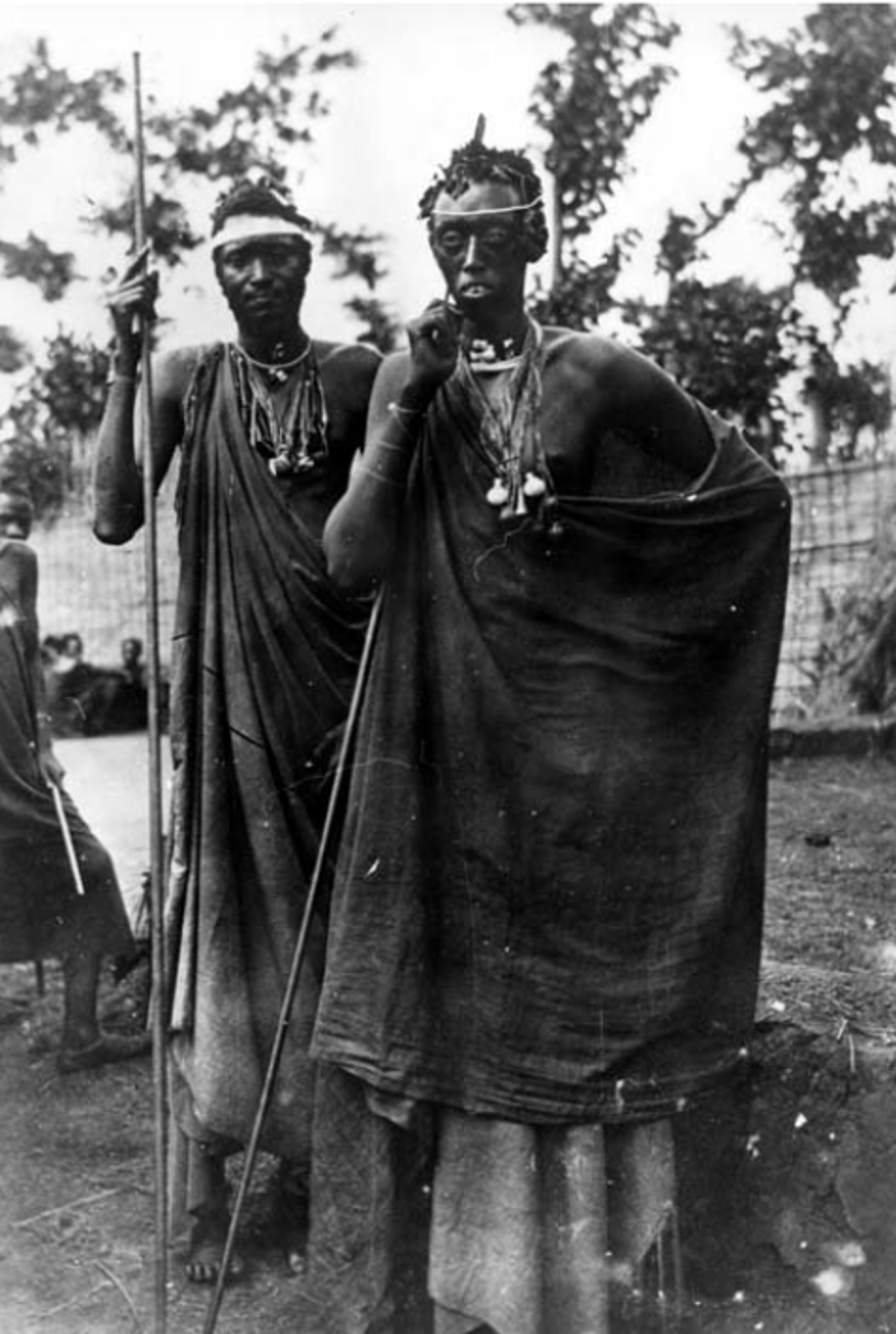Musinga and the flag (c. 1910)
 |
| Musinga and the flag (Source: DKG Archive) |
In my
book on the establishment of colonial rule in Eastern Africa, I took
this picture as a starting point to discuss what German rule really
meant for Africans. The picture shows the Rwanda king Musinga
standing near by a German flag. The flag is erected in-midst of
an open field and it seems to be done only for this particular moment when the
picture was taken. I always asked myself why the photographer did
this. My guess is that he was eager to establish some visual
connection between the king and the German flag in order to prove
that he was “our king”.
The
expansion of colonial rule was always accompanied by such visual
markers to show that the African ruler was now part of the colonial project. It
usually started with the signing of some treaty by the African ruler
and the colonial official. Often in the context of this ceremony
(sometimes later), Germans awarded the ruler with some gifts. These
were usually uniforms or parts of uniforms. For an African ruler of
this period there were foremost textiles, the most important currency
in Eastern Africa at the end of the 19th century.
Textiles were used as a payment in the ivory and slave trade and as a
gift to establish diplomatic relations. For Germans it was more. It
was all about to define the ruler as a German subject. Musinga, it
seems, was not interested in German uniforms (he would later accept a
Belgian uniform). The photographer, therefore, made this arrangement
with the flag.
The
picture was made around 1910, when German rule in Rwanda was still in
its infancy. There were only few Germans present in the kingdom. Some
dozen troops were concentrated on the border to the Belgian Congo to
block any advance from the European rival into the territory that was
still subject to intense diplomatic negotiations on questions of its
borders. Overall, Germans had still little influence and only few
contacts with Rwandan politics. Musinga tried to manipulate the
Germans for his own goals and to block their further penetration into
Rwanda at the same time. From time to time, Germans intervened on the
behalf of the Rwandan king to subdue rebellions against his rule.
Some disputes evolved around the presence of Catholic missionaries,
who were presumably seen by the Court as a greater threat to their
political hegemony and autonomy than the Germans.
The
picture illustrates this state of the relationship between Musinga
and the Germans in an almost iconic way. German presence was to the
Rwandan king something that lasted for a moment. Something that was
only little connected with Rwandan politics.


Comments
Post a Comment